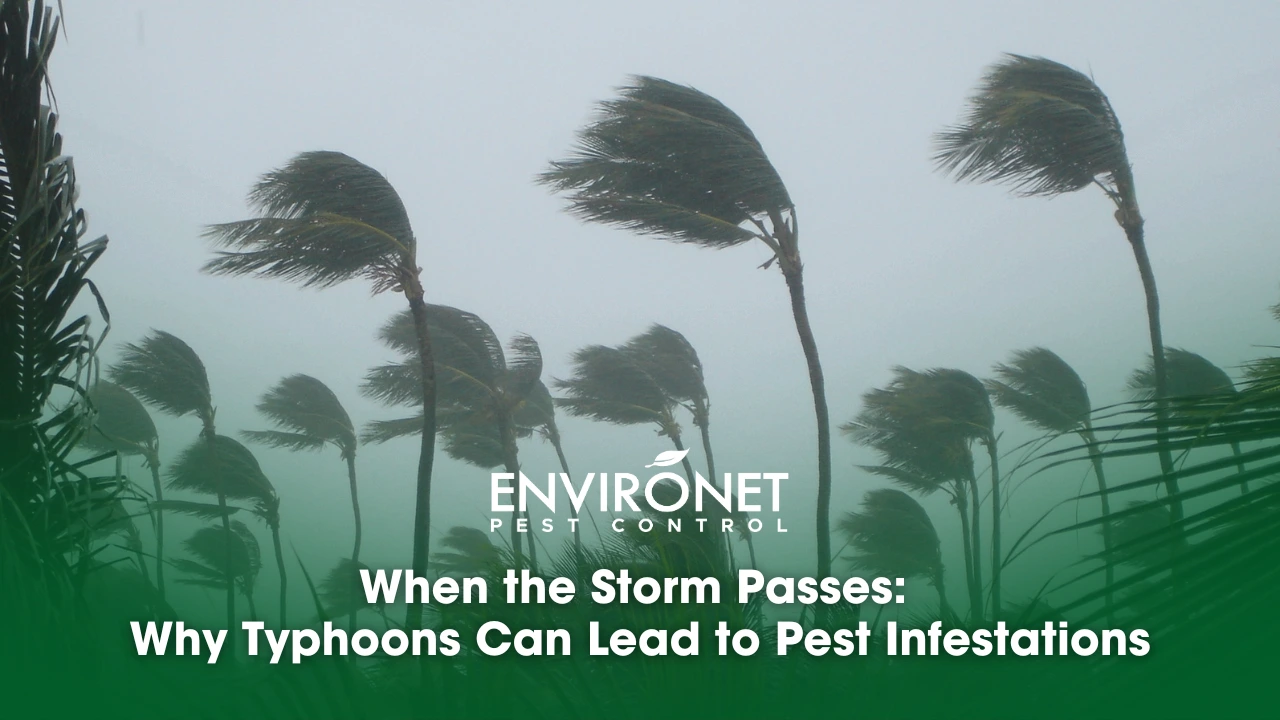
When the Storm Passes: Why Typhoons Can Lead to Pest Infestations
Every year, Filipinos brace for the typhoon season — strong winds, heavy rains, and floods that leave behind damage and disruption. But once the skies clear, another problem quietly begins to emerge: pests.
From mosquitoes to rats and cockroaches, these creatures thrive in the aftermath of storms, taking advantage of the damp, cluttered, and weakened state of our surroundings. Understanding how and why this happens can help us protect our homes and communities better.
How Typhoons Create Pest Problems
Typhoons change the natural environment in ways that make it easier for pests to breed and spread:
- Flooding Creates Breeding Grounds for Mosquitoes
Stagnant water left after heavy rains becomes an ideal breeding site for mosquitoes — the same pests that can transmit dengue, chikungunya, and other illnesses. Even small puddles, clogged drains, or water-filled containers can become hotspots within days. - Displaced Pests Seek Shelter Indoors
When their nests are destroyed by flooding or strong winds, rodents, cockroaches, and even termites seek new shelter — often inside our homes and buildings. This is why it’s common to see increased pest activity right after a storm. - Debris and Garbage Attract Unwanted Visitors
Piles of fallen leaves, soaked trash, and spoiled food become food sources for many pests. Without proper cleanup, these can quickly lead to infestations that are difficult to control. - Weakened Structures Invite Termites and Other Hidden Pests
Moisture from floods or leaks can soften wood, making it more vulnerable to termite attacks. Cracks and openings caused by storm damage also give pests more ways to enter.
What You Can Do After a Typhoon
After ensuring everyone’s safety, taking a few preventive steps can go a long way in avoiding pest-related problems:
-
Inspect your home for cracks, leaks, or holes that pests can use as entry points.
-
Remove stagnant water from buckets, tires, or containers.
-
Clean and dispose of debris properly.
-
Store food and trash securely to prevent attracting rodents and insects.
-
Schedule a professional inspection if you notice signs of infestation or water damage that may attract pests.
Why This Matters
Post-typhoon recovery isn’t just about repairing structures — it’s about protecting health and safety. Pest-borne diseases can spread quickly after disasters, especially when sanitation and waste management are disrupted. Being proactive with pest prevention helps communities recover faster and safer.
We’re Here to Help
At Environet Pest Control, we understand the challenges Filipinos face during and after the storm. For over 24 years, we’ve been helping homes and businesses stay protected through safe, eco-friendly, and reliable pest control solutions.
Together, let’s rebuild — stronger, cleaner, and pest-free. 💚
